Welcome to part two of this sketchbook tour with detailed nature studies. Part one can be found here.
Here’s a video version of this post:
Sketchbook Tour Fall ’21: Detailed nature studies (plants, birds, bats) | part 2 (video)
Starting with common flax (Linum usitatissimum) I explored a number of meadow and field flowers. Flax is an incredibly beautiful and delicate flower, and I found it hard to get right on this structured paper. If you grow it yourself you can harvest a small amount of your own linseeds from each plant.
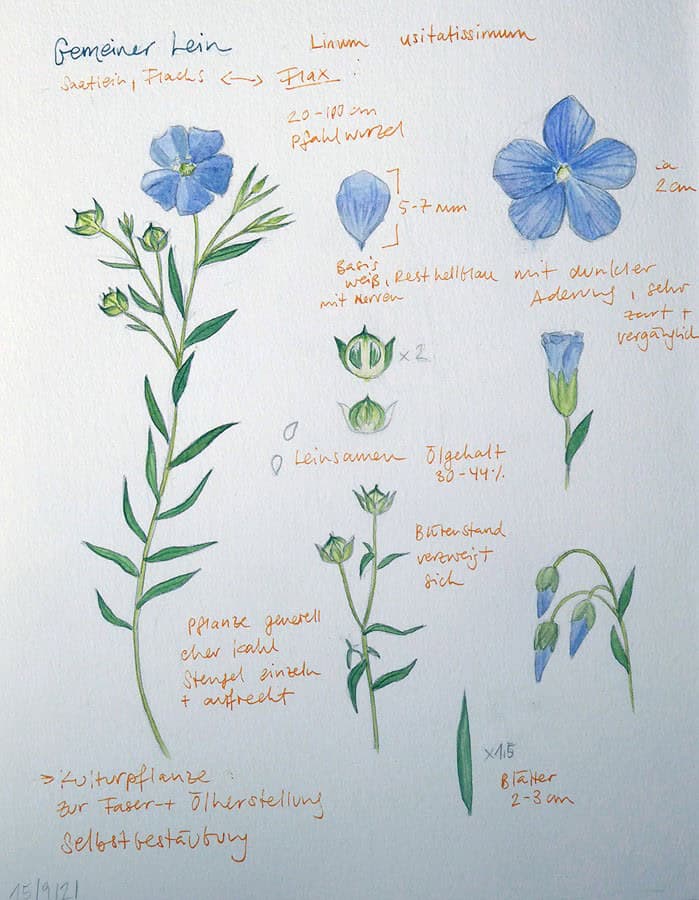
Another loose study page with a Duke of Burgundy butterfly (Hamearis lucina) and perforate St. John’s wort (Hypericum perforatum). This is probably my least favorite page so far layout-wise. I also didn’t have the time to improve it with some notes. Still, it was enjoyable to be able to draw from life for once (the hypericum).
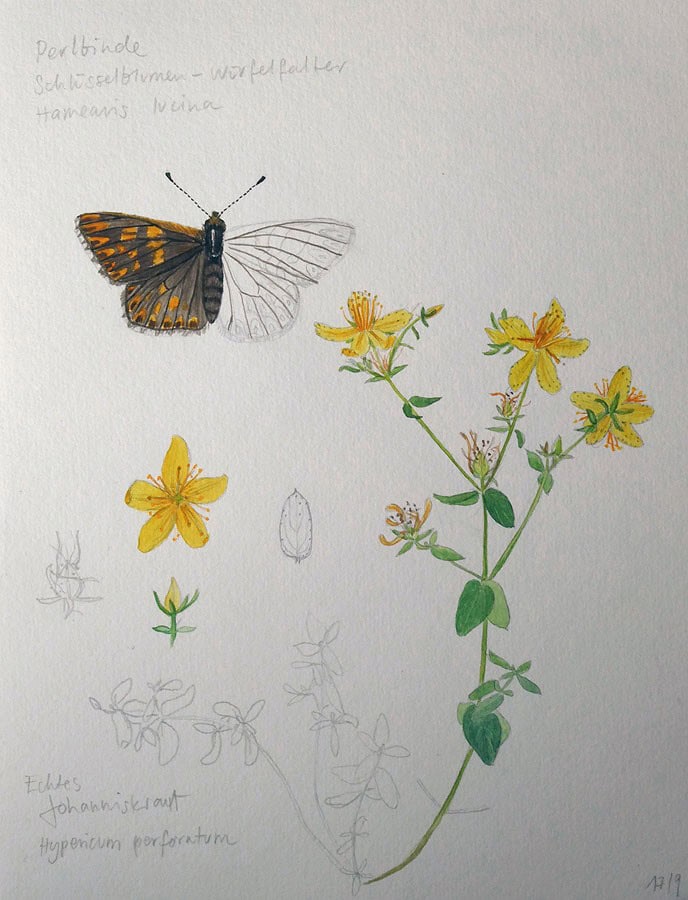
The cornflower (Centaurea cyanus) is another field flower that has disappeared from view in recent years due to herbicide use – it’s regarded a weed in cornfields, like the common poppy. I personally love the colorful spots it creates in the fields, and I also like to grow it between veggies. Another one I was happy to sketch live!
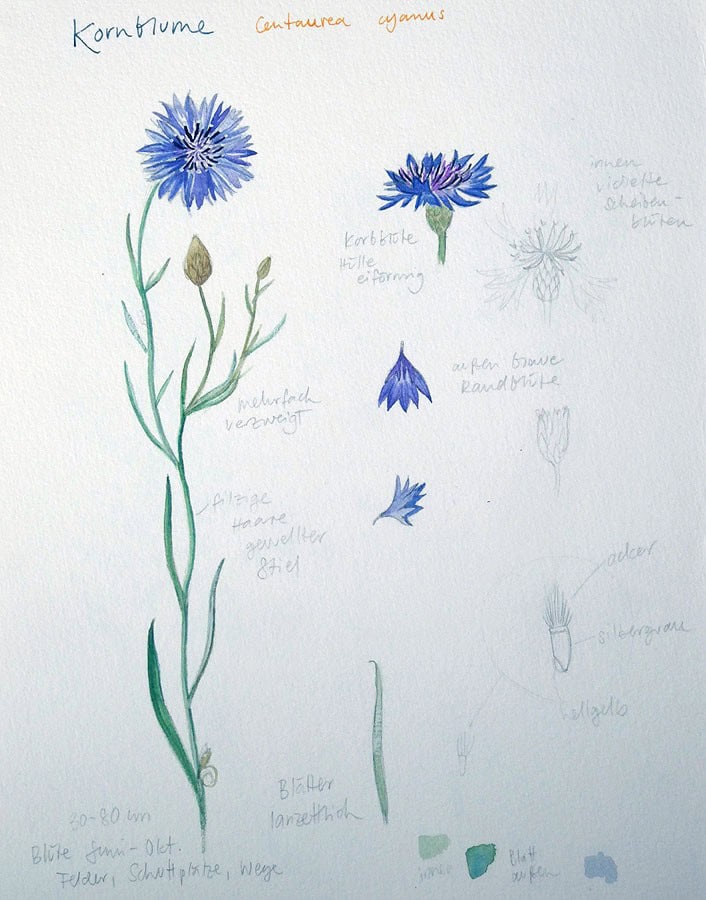
The Eurasian skylark (Alauda arvensis) is one of these birds you will most likely first notice by song. The males of these low-key brown birds sing a clear, continous warble while they’re in the air, usually hovering or circling. I’ve mostly seen them either flying up or hovering, seldomly resting like in my study sketch. They have a beautiful subtle pattern and can raise their head feathers to a short crest, and like so many field and farmland birds their numbers are declining due to intensified agriculture and use of pesticides.
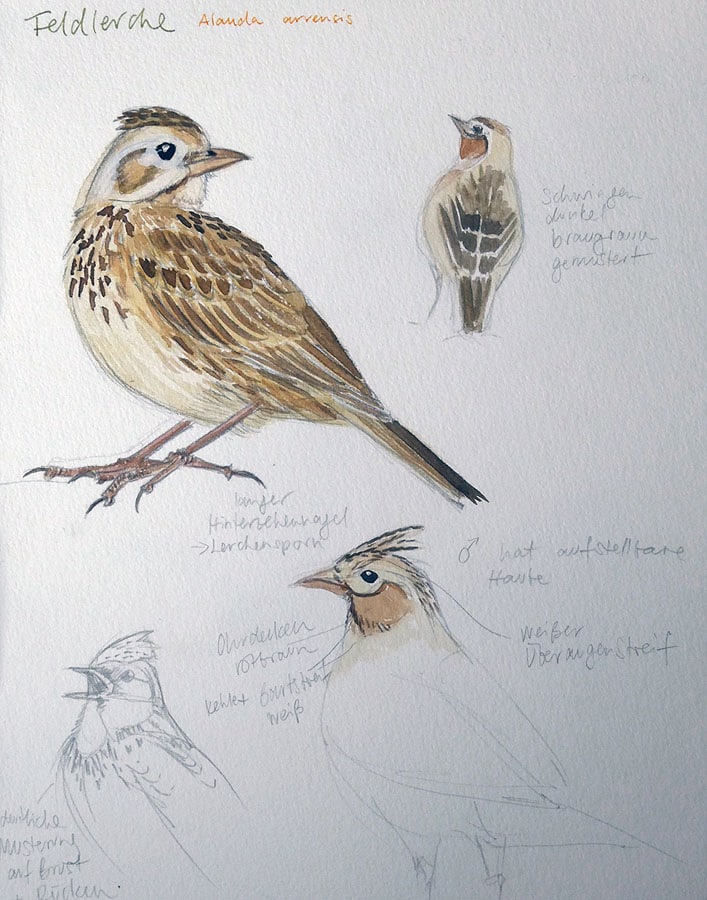
Another little brown bird with a wonderful song is the chiffchaff (Phylloscopus collybita). This little warbler has a song that even I can identify, and I usually hear the bird before I see it. This species is very similar-looking to the willow warbler, but their songs are quite different. I like sketching these drab brown birds very much.
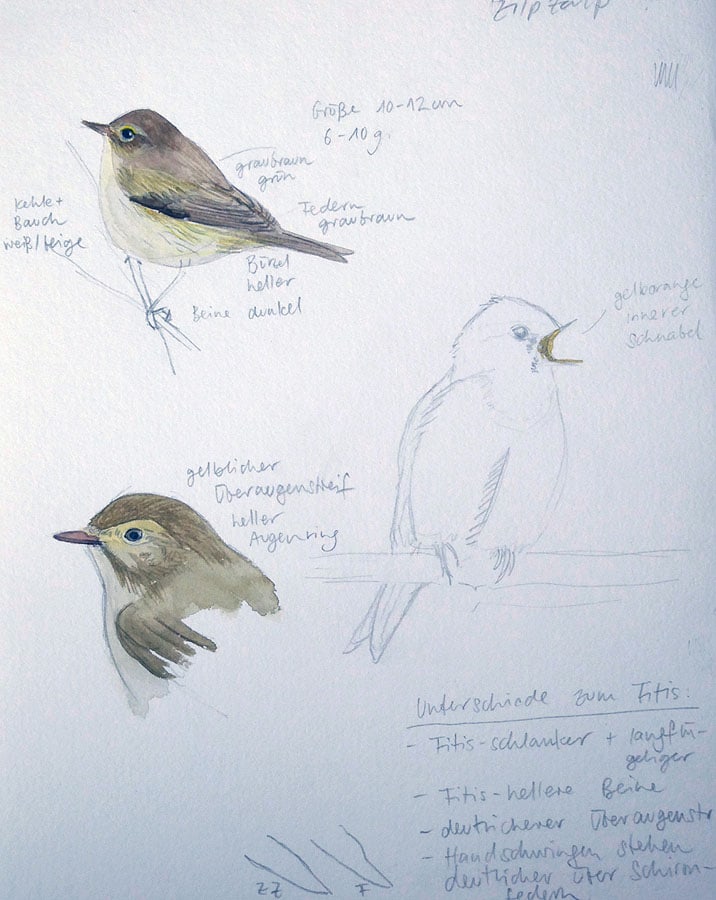
Back to the orchids! This one is the fragrant orchid (Gymnadenia conopsea), named aptly because its nectar has a faint vanilla smell. If I find this orchid next year (it should be common in several local protected areas) I will check this for you! I didn’t have much time for the large sketch, but it was good to take a close look at the structure of the flowers themselves, they have an interesting long spur.
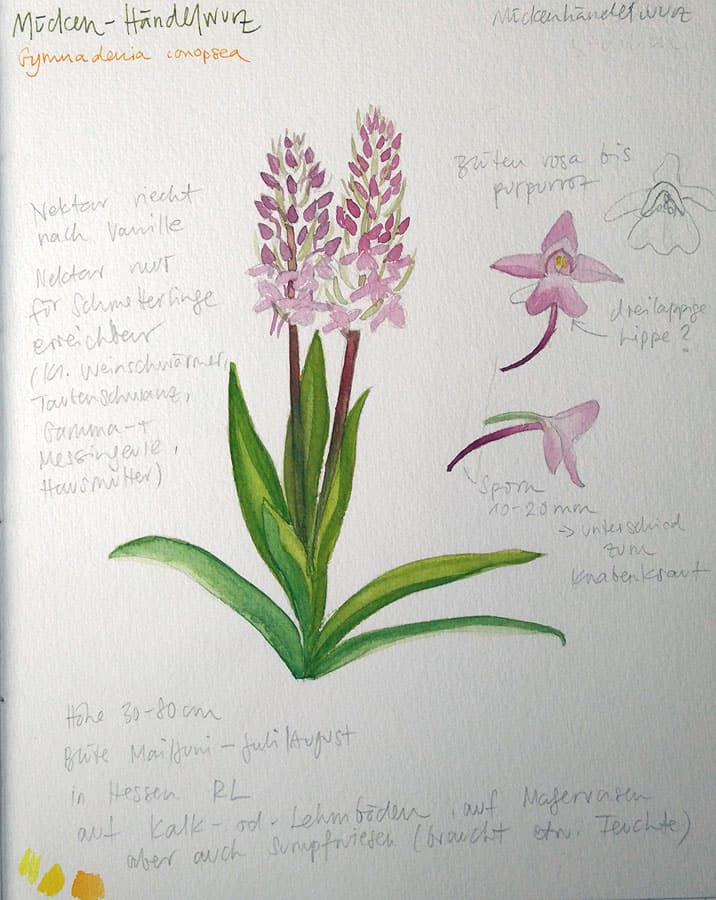
A spring plant I have seen and sketched many times (but never grow tired of) is the common cowslip (Primula veris). In German the name is “key flower” or “heaven’s key”, probably because the flowers can remind one of a ring of keys. I have to admit I prefer this name to the more rustic sounding English name.
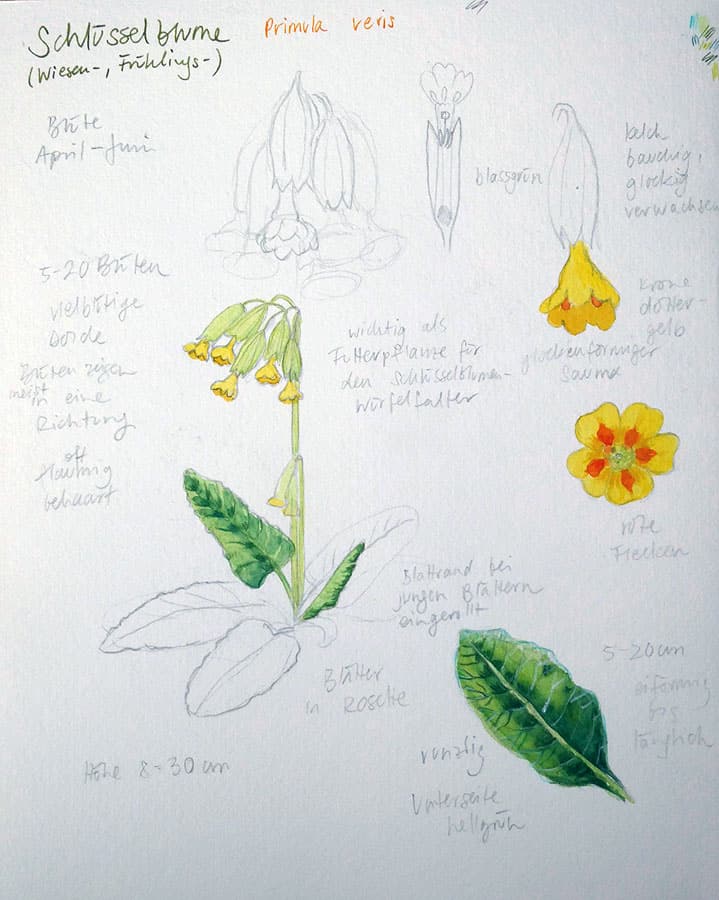
A total change of habitat – we’re entering woods with a lot of fallen dead trees and wood debris. The European stag beetle (Lucanus cervus) lives here, with the size of 4-8 cm a sight you probably won’t miss. As always, the weird thing about nature is that the males use these huge enlarged mandibles only for combat, and they’re pretty useless otherwise. It’s was really fun to dive into the weird anatomy on these insects.
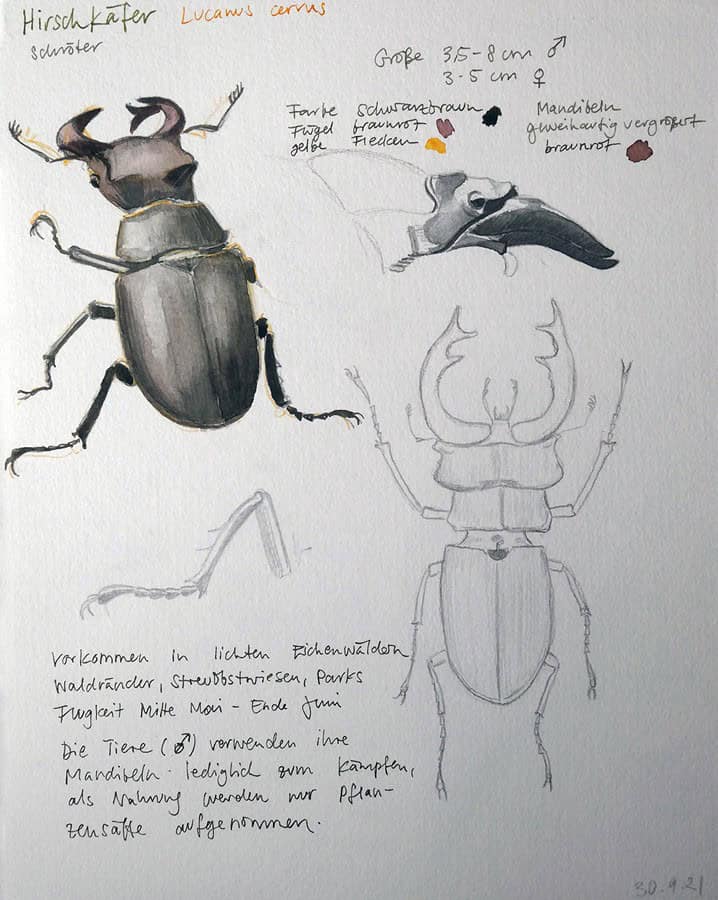
A beautiful bird – the middle spotted woodpecker (Leiopicus medius). I’ve never seen this on in the wild before (or I need to differentiate those colorful woodpeckers better). I changed my sketching technique a bit for this one, using ink before I applied the wash. Drawing birds is always a relaxing activity for me, and being able to lay in the pattern with waterproof ink before applying watercolor helps a lot.
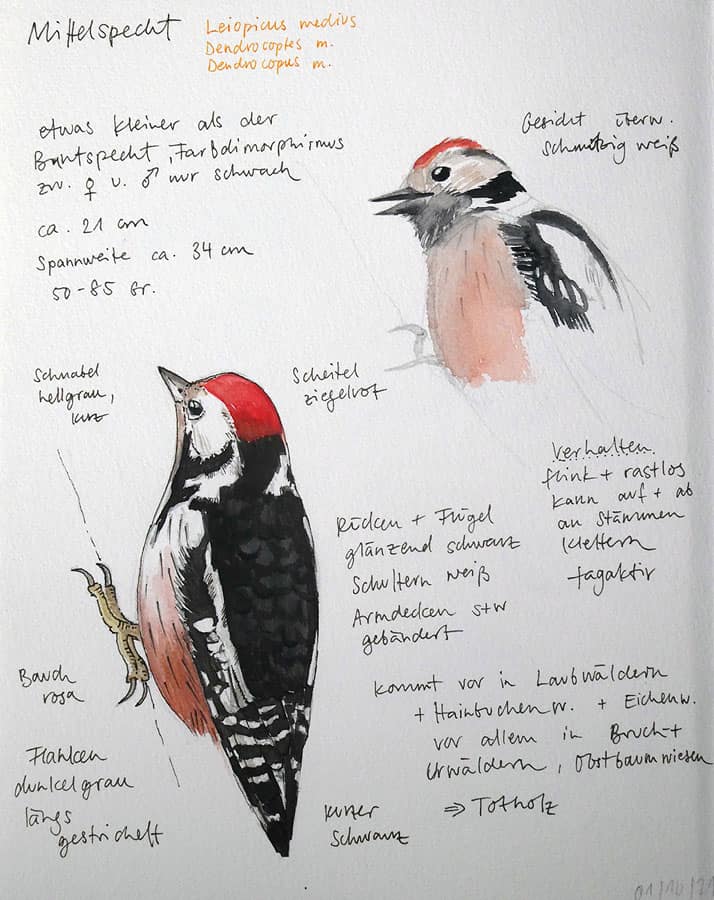
I don’t often get to draw bats, so it’s really interesting to study them. When I worked in nature conservation many years ago, we had a bat exhibition, and it was really fun to do guided bat tours at night – with an ultrasound device to reveal their calls. Science has revealed that the ultrasound and high-precision flight technique doesn’t prevent them from bumping into each other all the time. During my research I actually learned the old English name for them was flittermouse – very close to the German name “Fledermaus”. This species is a noctule bat (Nyctalus noctula), quite the large species.
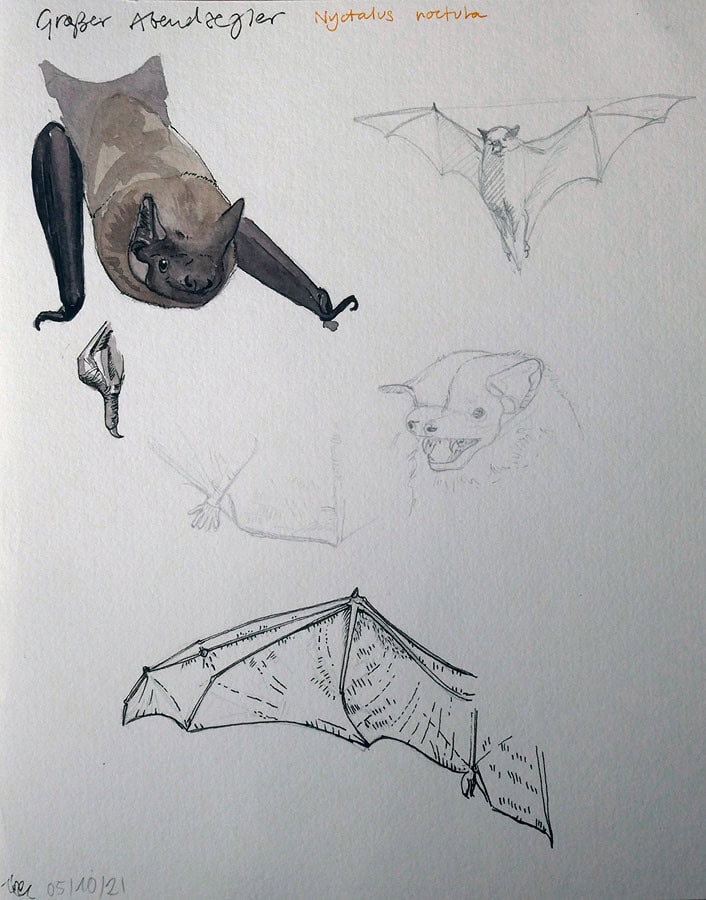
And another woodpecker to close with, the grey-headed woodpecker (Picus canus), a close relative of the green woodpecker. Another really beautiful bird with a spectacular color – I like to use green gold as a base wash to bring out the shine of the plumage.
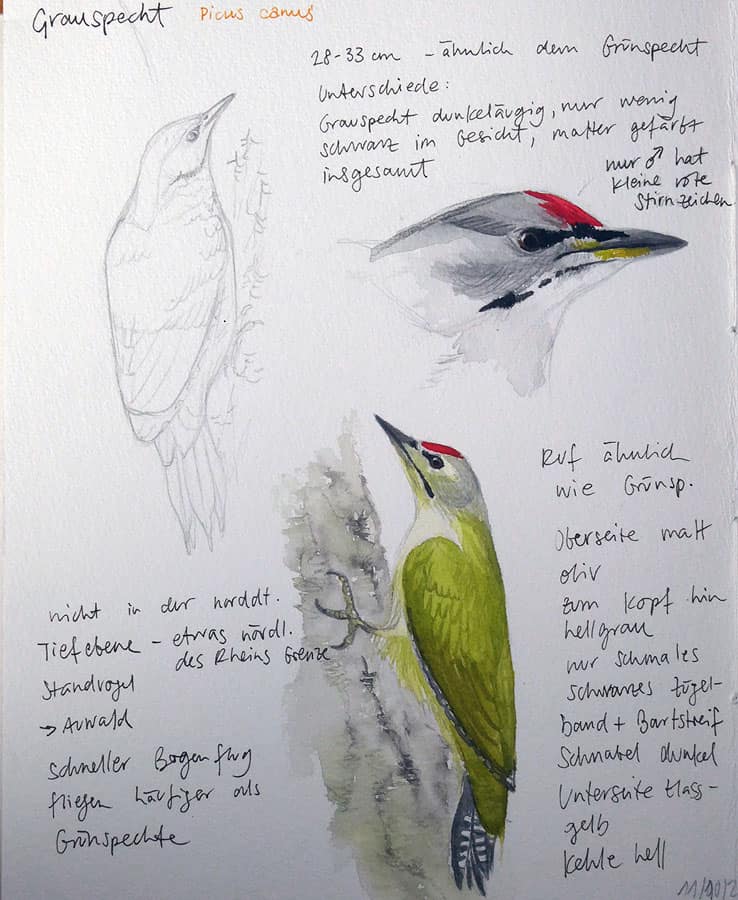
All in all, these detail studies are, as I said, really enjoyable for me to do when I have the time to create them, and my finished illustrations turn out better as a result, too. Since I will be knee-deep in this project for a little while longer, you can probably expect to get another one of these sketchbook tours again.
I hope you liked it, let me know what you think!


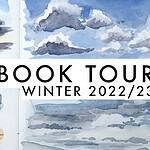

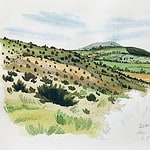
I really loved your woodpeckers, especially the spotted one you did with ink and watercolor. But I didn’t get to see your bat in the layout. I really appreciate your nature sketching.
Thank you Jennifer. Somehow I forgot to add the bat, it should be fixed now! Thanks for the reminder. 🙂
Very stunning pages and so informative! It makes me sad to hear about the effects of pesticide on beautiful native plants (like the cornflower, poppy) and birds (skylark)! Thank you for bringing awareness through nature journaling!
Thank you Karen. I always try to think of and include positive stories about species that are thriving – because they exist too. But we have definitely moved ourselves into a corner with our industrialized agriculture and extensive land use.
I love your nature pages, these are so well done. The colors you use seem very accurate and your drawings are beautiful. Do you always draw from nature or do you sometimes take photos and finish later? As much as I would like to draw outdoors those birds just fly away too fast! : ) Thanks for sharing these I always look forward to your posts.
Thank you Tracie! Yes, it’s definitely a controversial topic, I try to find a balance between both. It’s not always possible to observe each species in nature at any time (like for these studies – they’re for a job, and nothing is blooming now and some birds have migrated, etc.) It’s perfectly fine to work from photos if you keep in mind that shapes and colors can be distorted. That’s why it’s always good to observe as much as you can outdoors to memorize, for example, what a bird looks like, how it moves, the colors, and so on. But for details photos are a big help, also for learning how to draw a species.
After reading your description of the Chiffchaff’s call, I rushed to listen to it on YouTube. What a distinctive and sweet song! Thank you for introducing me to this beautiful bird.
Oh, that’s wonderful! You’re welcome. 🙂
Your work is beautiful. I always look forward to your sketchbook tours. Do you ever paint birds or landscapes and frame them for your home?
I have a selection of my own work on my walls, yes. 🙂
I am enjoying yours sketchbook tours so much, and I look forward to more. I have a question about the watercolor wash you used on the gray headed woodpecker. Is green/gold a specific color? If so, what company makes it? Thank you.
Thank you very much Jane! Yes, green gold is a specific color, I use the one by Winsor & Newton, made from the pigment PY129. There may be other green golds on the market, some are mixes. I really like the luminance of this almost yellow green, and I use it a lot to warm up mixes, it’s very transparent and a good mixer. You could probably even use it as a cool yellow instead of lemon yellow in a small palette.
Thank you very much, Julia. I will look for it. Jane